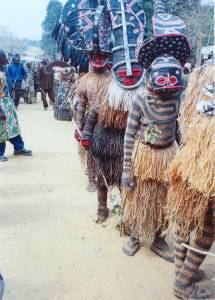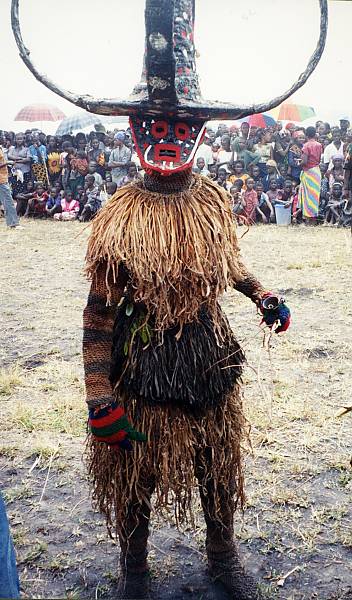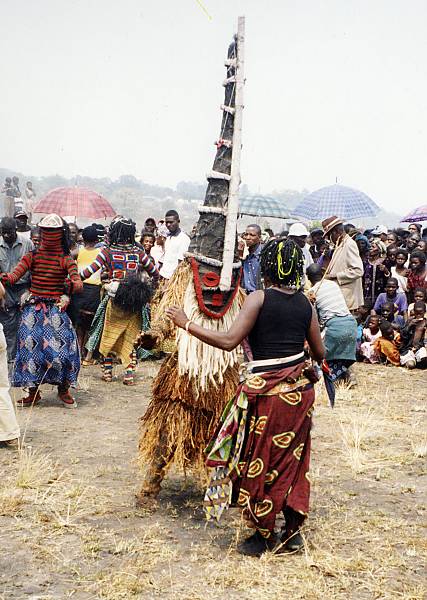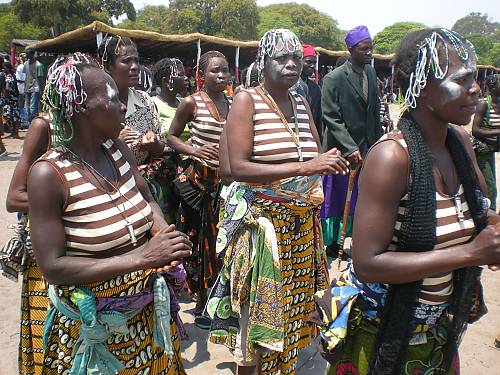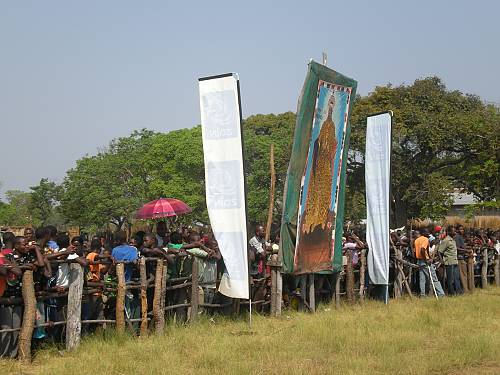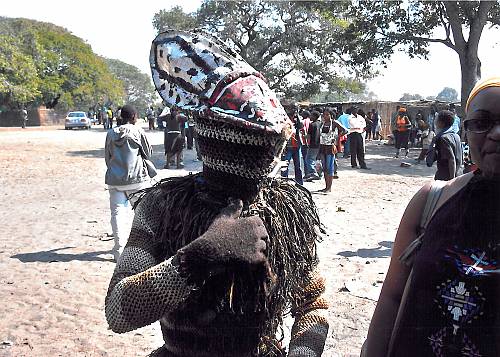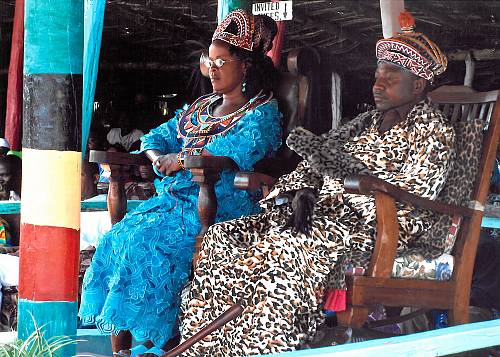Makishi masquerade
Inscribed in 2008 (3.COM) on the Representative List of the Intangible Cultural Heritage of Humanity (originally proclaimed in 2005)
The Makishi masquerade is performed at the end of the mukanda, an annual initiation ritual for boys between the ages of eight and twelve. This ritual is celebrated by the Vaka Chiyama Cha Mukwamayi communities, which include the Luvale, Chokwe, Luchazi and Mbunda peoples, who live in the northwestern and western provinces of Zambia.
Usually at the beginning of the dry season, the young boys leave their homes and live for one to three months in an isolated bush camp. This separation from the outside world marks their symbolic death as children. The mukanda involves the circumcision of the initiates, tests of courage and lessons on their future role as men and husbands. Each initiate is assigned a specific masked character, which remains with him throughout the entire process. The Chisaluke represents a powerful and wealthy man with spiritual influence; the Mupala is the “lord” of the mukanda and protective spirit with supernatural abilities; Pwevo is a female character representing the ideal woman and is responsible for the musical accompaniment of the rituals and dances. The Makishi is another masked character, representing the spirit of a deceased ancestor who returns to the world of the living to assist the boys. The completion of the mukanda is celebrated with a graduation ceremony. The entire village attends the Makishi dance and pantomime- like performance until the graduates re-emerge from the camp to reintegrate with their communities as adult men.
The mukanda has an educational function of transmitting practical survival-skills as well as knowledge about nature, sexuality, religious beliefs and the social values of the community. In former times, it took place over a period of several months and represented the raison d’être of the Makishi masquerade. Today, it is often reduced to one month in order to adapt to the school calendar. This adjustment together with the increasing demand for makishi dancers at social gatherings and party rallies, might affect the ritual’s original character.

